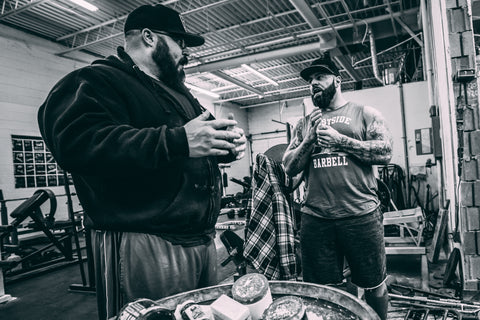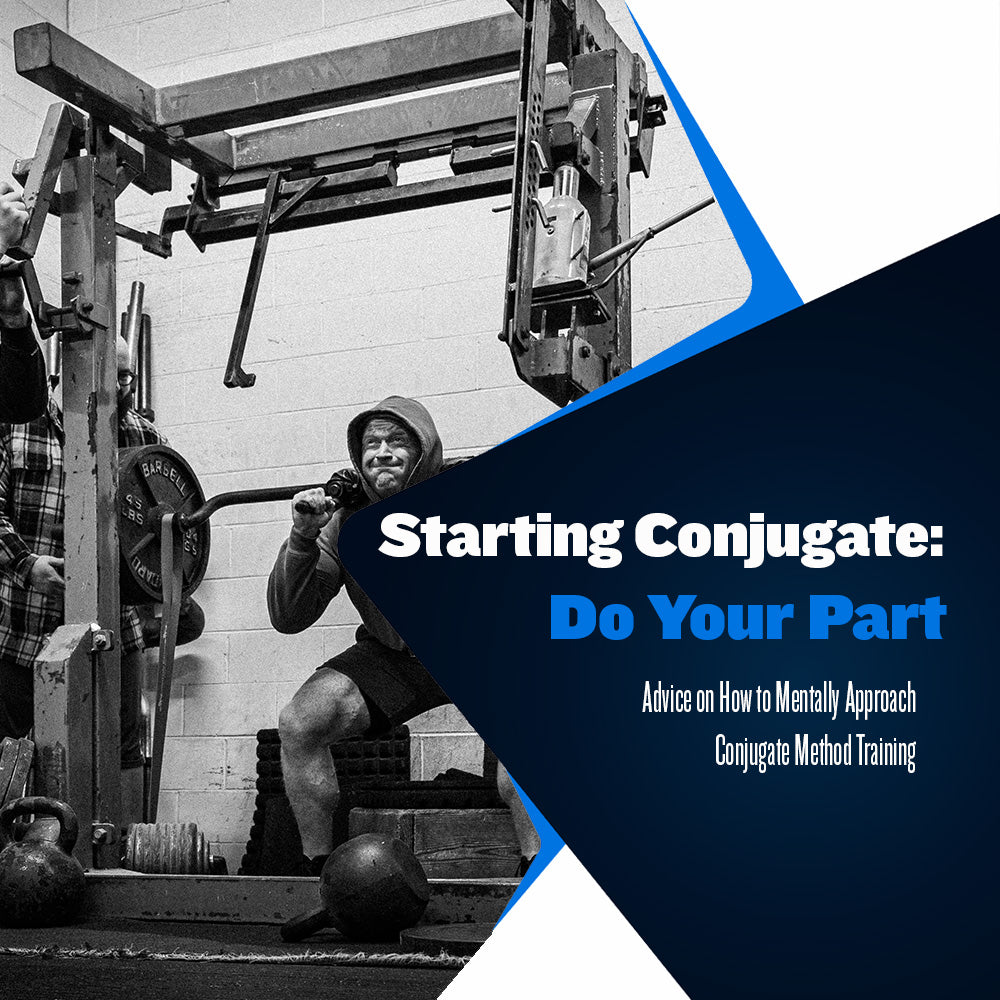Starting Conjugate: Do Your Part

When programmed correctly, no training method can compare to the level of efficiency and optimization that a Conjugate Method can afford. No matter how effective a methodology is, the ultimate success of any training program will depend on the athlete's ability to perform the exercises at the standard necessary to achieve the desired training effect.
At Westside, we use three primary methods to strengthen our athletes; maximal, dynamic, and repeated effort. These three training methods combine to build absolute strength, speed-strength, strength endurance, and muscle mass. However, training outcomes can be lackluster if an athlete fails to execute these methods to standard.
Some athletes react to these underwhelming training results by looking for a new supplement, movement, or method to solve their issues. Unfortunately, they fail to realize that their lack of success may be their fault due to improper output or mental fortitude during training sessions.
As the old saying goes, "you get what you put in," this very much rings true in the world of strength and conditioning. Without the proper level of exertion, mental fortitude, and dedication to your training, you will ultimately reach a point where improvement is no longer possible. So, an athlete needs to understand the expectations and execution associated with each method we use.
Here is how we expect athletes to execute the maximal effort, dynamic effort, and repeated effort methods at Westside Barbell:
Maximal Effort Execution
This method is often considered dangerous by coaches who fail to understand the importance of absolute strength and sports performance. The association has been made due to misunderstandings about how exactly we execute max effort work at Westside Barbell.
Contrary to popular belief, we do not continue to go for max singles until someone has blood coming out of their nose and eyeballs, nor do we recklessly attempt weights we have no business lifting. At Westside, we have a very disciplined approach to max effort that keeps our injury rates low and our training sustainable.
First, we must establish some perspective as far as PR lifts go. At Westside, we count two types of PR lifts; all-time PRs and current training cycle PRs. Most often, our goal is to break our all-time PR lifts, which marks an overall improvement for an athlete. However, there may be times when an athlete is incapable of displaying all-time absolute strength ability; at that point, we would target current training cycle PRs.
It's simple; you will establish your baseline max effort lifts at the beginning of the training cycle and strive to beat the current cycle PR lifts as you work through your exercise rotations. Once strength levels return near all-time PR levels, you can return your focus to breaking those PRs.
The second thing that must be established is self-control when executing max effort training. It is easy to get caught up in training and want to yell and act stupid, attempting to pump yourself up to lift a certain weight. This approach will quickly lead to injury or failure. When executing max effort work, an athlete must keep an intense but level mindset.
To be consistently successful, you must lift within training conditions you can constantly recreate weekly. Going crazy and acting like you're a berserker is not a sustainable state of being and will certainly not be replicated in a similar way on a weekly basis. Remain in control of yourself - your training data will be more reliable, and you won't make yourself look stupid.
Dynamic Effort Execution
Execution of the dynamic effort method comes down to two things; speed and quality of movement. For dynamic effort method training to be successful, you must be able to move the barbell at proper velocities, and you must be able to move in a controlled manner. For this to be possible, an athlete must learn proper squat and box squat mechanics.
It is important to be disciplined when executing dynamic effort lifts. Do not get caught up in the amount of band tension or weight on the bar. The focus is on movement speed and quality. Do you want to be within certain intensity levels? Yes. However, if movement speed is suffering, you must gradually lower the training weight until you can achieve optimal barbell velocity.
Be honest with yourself; just because the percentages say you should be using the weight you are using doesn't mean it is the right training weight for you. The percentages are guidelines we try to stick as close to as possible, but if an athlete needs to modify the weight for barbell velocity to improve, that must be done.
Repeated Effort Execution
The repeated effort method takes effect when we execute our accessory exercises. Our accessory work represents 80% of our overall volume, so the effort you put into your accessory training plays a vital part in your athletic development.
If you've ever trained at Westside, you will notice that after our main exercises we move on to accessory movements that are often associated with bodybuilding-style exercises.
That is the entire point of the repeated effort method, build muscle mass and enhance strength endurance. We utilize accessory work to target muscle groups responsible for identified weaknesses precisely. To ensure this is accomplished, it is important to train your accessory exercises at the proper levels of volume and intensity.
At Westside, we follow a simple rule to select accessory exercise training weights: choose the heaviest weight you can lift while completing all prescribed sets and reps with the proper technique. This ensures we constantly train our accessory exercises at effective intensity levels, not just go through the motions.
Controlled Intensity
If you described the training mentality at Westside best, it would be controlled intensity. To succeed at anything, you must push yourself to the highest level of performance you can achieve. That is the game we play when we train, focusing on pushing ourselves as far as possible while still keeping in mind the need for self-preservation so training can continue.
Nobody can control how you lift your weights. The amount of effort you put into each set and rep is on you. The level of discipline you display in your training decisions is on you. And ultimately, your success or failure will be on you. So, have the correct perspective and understand each training method's basic why and how.
You want to train with proper focus, intensity, and dedication. Just make sure you are creating an approach that is sustainable long-term and can be replicated week after week. Don't be a screaming lunatic, and don't be apathetic. Treat your training like training, get the work done to the correct standard, and get on with life.
Leave the emotional crap at home.





